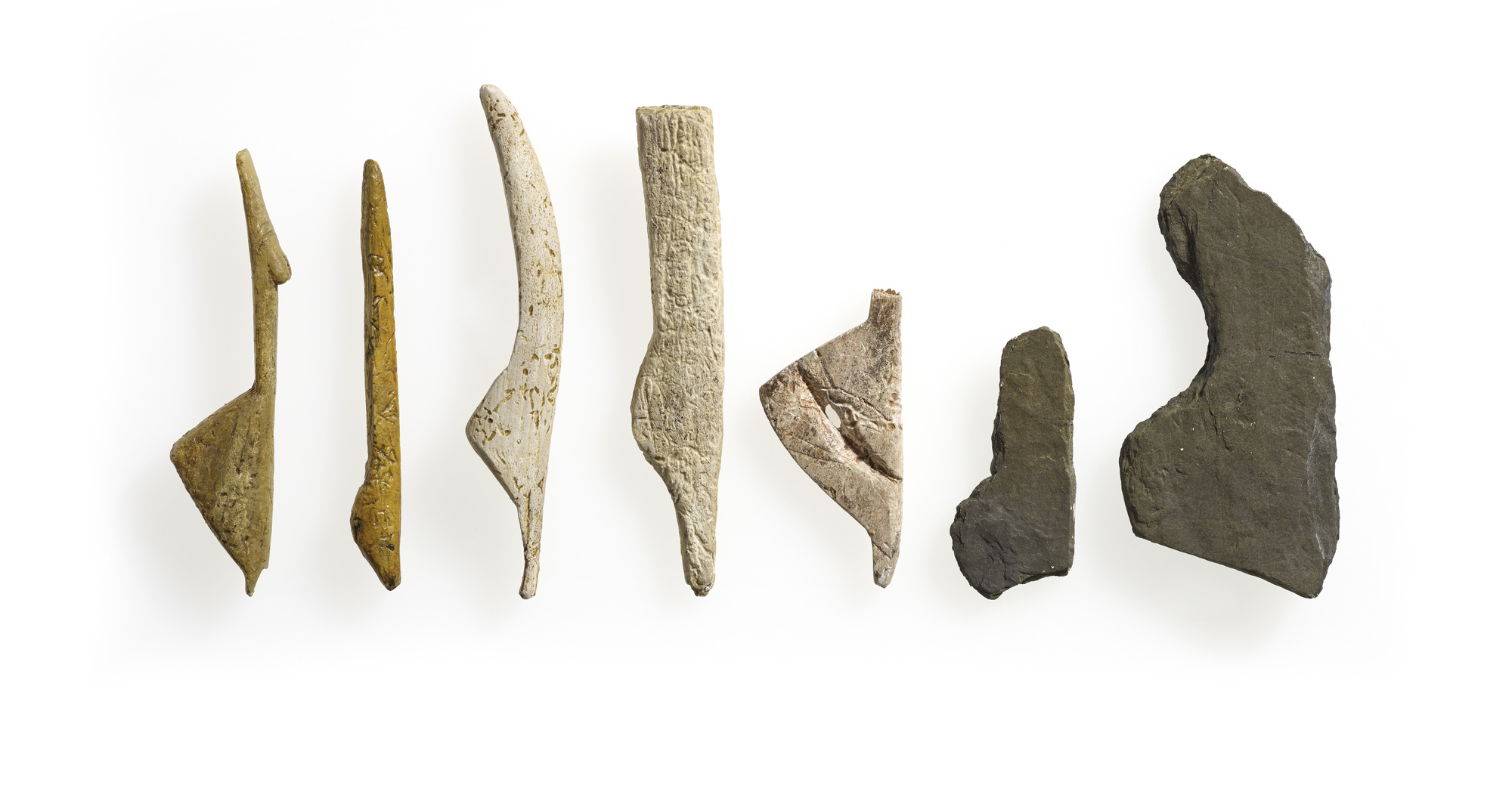
- Home
- More insights into the Magdalenian way of life
- The Magdalenian in the Rhineland and Thuringia
- Working flint
As was the case for bones, the same techniques were used across the whole of Magdalenian Europe to work siliceous rocks. However, techniques were sometimes adapted according to the raw materials available.
Raw materials and territories
The central Rhineland was particularly lacking in raw materials for knapping, which explains why a significant proportion of materials came from geographical areas at least 100 kilometres away. These materials came to Gönnersdorf and Andernach from all directions and therefore probably reflect the territory travelled across by human groups over at least one year. While flint arrived either in blade form or already transformed into tools, tertiary quartzite, available locally, was normally knapped at the site. Like flint blades, those made from quartzite were also repaired and reused several times, to the extent that they were very much smaller by the time they were abandoned, like a metal knife which has been sharpened hundreds of times. In Thuringia, the Magdalenians mostly used flint from the Baltic, available in moraines, which they could reach by walking one or two days to the north.


